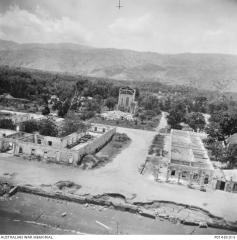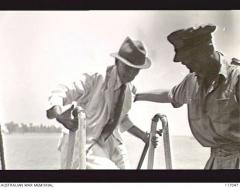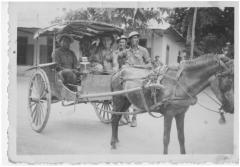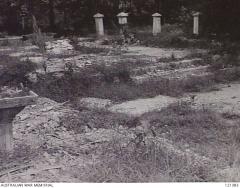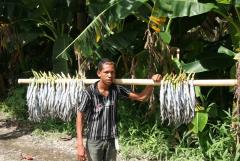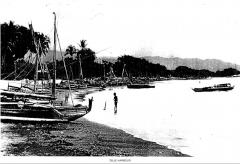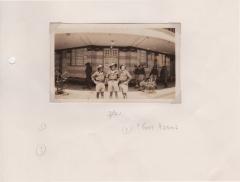-
Posts
618 -
Joined
-
Last visited
Content Type
News
Video & Audio
Men of the 2/2
Forums
Store
Gallery
Everything posted by Edward Willis
-
DAVID ROSS (1902-1984) – DIPLOMAT AND SPY Col Doig paid the following tribute to David Ross in the ‘Courier’ when he passed away in August 1984: Vale - Dave Ross This man will be known to many of the Unit boys, particularly those who were in the Timor Campaign. He was, when we occupied Portuguese Timor, although an Australian, the British Consul. His contribution to our cause was one of high order. He helped us to settle into Dili and was a great diplomat in his dealings with the Portuguese, Dutch and our own hierarchy. His advice on the Timorese and the way to get on side with them was invaluable, the terrain, the weather patterns, the hazards we would encounter in our patrolling, all were spot on. Dave was virtually under house surveillance once the Japanese landed and we next saw him when he was sent by the Japanese to Hatu-Lia with a 'Surrender Notice', via the Japanese Consul, but the message was from the Japanese Commander. Bernie Callinan's 'Independent Company' describes it perfectly. On the 17th March 1942 Dave was on his way back to Dili with a 'No Surrender' message for the Japanese. It was a traumatic occasion for him, likewise us, to see him go was really emotional as no one knew what would happen to him. Dave was to make another trip for the Japanese [on June 25], again carrying a 'Surrender Notice' to Ainaro, this time in poor health after close confinement and meagre rations. Before departure he told the Japanese that the Australians would not surrender, they, the Japanese, would have to go out and fight them in the hills, but even then, they did not have enough troops to capture the Australians. He was a brave man who did not hide behind his post as Consul. Out he came in June and reached Ainaro an exhausted man. He had made no promise to return so Force H.Q asked permission for this loyal man to be repatriated to Australia. It was not immediately forthcoming, but ultimately Dave Ross left Beco [on July 8] heading for Australia on the little 'Kuru' piloted by Lt. Bennett [see previous post in this series, ‘The Timor ferry service]. His job well and truly done he deserved it, an Aussie to the enth degree. We mourn the loss of this old friend, gentleman, diplomat, courageous. When the 2/2nd Commando Association was formed he became a member and was a regular guest at our Annual Dinner and other functions. He remained a friend of the 2/2nd to the very last and we honour him for his excellent contribution to our cause, to contain the Japanese and to 'Not Surrender'. Both were done and Dave Ross played a big part Indirectly in both these happenings. Vale, Dave Ross, you fought a good fight. Rest content in the Vale of Valhalla, where the only surrender will be, to God himself. Christopher C.H. Wray in his book ‘Timor 1942: Australian commandos at war with the Japanese’ (pp.111-113) provided the following narrative of David Ross’s final mission on Portuguese Timor and his subsequent return to Australia: Japan Tries to Persuade the Australians to Surrender Again In June, the Japanese made further efforts to persuade the Australians to surrender. On 9 June a cablegram from Mr Clement Attlee, the British Secretary of State for Dominion Affairs to the Commonwealth Government, reported on a Portuguese proposal that if the Australians gave up and submitted to internment in Dutch Timor, the Japanese would withdraw altogether from the Portuguese part of the island. This solution would satisfy the Portuguese Government as the Japanese were requisitioning the already inadequate food resources of Portuguese Timor and generally acting in an intolerable manner. The proposals were repeated two days later. On 18 June, the Commonwealth Government replied to Attlee, explaining that the Australian forces on Timor were well organised, sufficiently supplied and conducting guerilla warfare against the Japanese. The Portuguese proposal had been discussed with General MacArthur and the Australian Chiefs of Staff. The Commonwealth Government pointed out that Australian troops were carrying out a valuable task on Timor, and the Government was not prepared to negotiate their surrender. Attlee was asked to inform the Portuguese Government accordingly. David Ross Meets with the Japanese Consul Not long after this exchange David Ross, the British Consul-General in Dili, was called before the Japanese Consul. Since the Japanese invasion Ross had been kept a prisoner in his house, save for the occasion [in March] when he had been sent out to make contact with the commandos. During his period of house arrest he had suffered acute boredom, being allowed no visitors, and for three months had half-starved owing to the lack of food for sale in Dili and the refusal of the Japanese to allow his servants to search for food in the surrounding country. The Japanese Consul was a cultured man who was a Roman Catholic and who had been educated in Spain. The Consul informed Ross that the Commander of the Japanese forces wanted Ross to carry a surrender offer to the Australians. Ross indicated that while he was willing to do this, he did not think the Australians would surrender as those who had been captured in February had been killed. The next day Ross was interviewed by the Japanese Commander, an elderly man of soldierly demeanour. The Commander was indignant at the insinuations made about the behaviour of Japanese soldiers towards their prisoners. He stated that neither he nor soldiers under his command had ever killed prisoners, and he personally accepted the surrender of the Australians on Ambon. As a token of sincerity, the following statement was prepared in English, signed and sealed by both the Commander and the Consul: In the name of the Imperial Japanese Government we here-by guarantee that all Australian soldiers under your command, who surrender to the Japanese Force now in Portuguese Timor, will receive proper treatment as prisoners of war in accordance with International Law. The Commander also asked Ross to convey to the Australian Commander his admiration for the fight which the Australians had put up. But, he said, if they were real soldiers they would come into Dili and fight to the last man. Ross commented that there were not sufficient Japanese in Dili to round up the Australians. To his surprise the Commander agreed, saying that from his readings on the South African War and his own experience in Manchuria it required ten regular soldiers to kill each guerilla, but he said, 'I will get what is required'. Ross Departs A few days later Ross was escorted a short distance out from Dili and told to make his way towards Ainaro which the Japanese believed contained the Australian Headquarters. Weakened by lack of food and his months of close confinement Ross was soon exhausted, but with the help of friendly Portuguese he reached Ainaro where he was found by Major Callinan and taken to Force Headquarters at Mape. The Australians were quite uninterested in the surrender proposals, which they gave scant attention. Ross had not promised to return to Dili, and so it was proposed that he be returned to Australia. At first the Australian authorities were reluctant to agree, believing Ross could carry out some role in Dili. However, permission was granted after it was pointed out that he had been kept prisoner and had been unable to achieve anything. On 8 July Ross returned to Australia on the ‘Kuru’. Also on board were the Dutch Consul, Herr Brauer, and his wife who had escaped from Dili at about the time of Ross's departure with the surrender proposal. Group Captain David Ross during wartime service with the RAAF ADDITIONAL INFORMATION ABOUT DAVID ROSS [1] David Ross (1902-?) http://www.airwaysmuseum.com/David Ross biog.htm Brief biography. [2] Steven Farram. - A short-lived enthusiasm: the Australian Consulate in Portuguese Timor. - Darwin, N.T.: Charles Darwin University Press, 2010, pp.4-6 ‘The British Consulate’. Valuable history of Australia’s pre-war and early war involvement with Portuguese Timor including the work of David Ross. [3] Wayne Gobert. - The origins of Australian diplomatic intelligence in Asia, 1933-1941. - Canberra: Strategic and Defence Studies Centre, Research School of Pacific Studies, Australian National University, 1992, esp. pp.43-45, 47, 60-63 and 77. http://bellschool.anu.edu.au/experts-publications/publications/3166/origins-australian-diplomatic-intelligence-asia-1933-1941 Comprehensive coverage of David Ross’s diplomatic intelligence role in Portuguese Timor. [4] ‘Assignment Asia: Wayne Gobert uncovers the surprising truth of Australia's intelligence work before and during World War II’ The Canberra Times (ACT: 1926 - 1995) Saturday 3 Mar 1990, p.17. http://trove.nla.gov.au/newspaper/article/120881983/12972094 Journalistic summary of Gobert’s monograph including content regarding David Ross. [5] Backroom briefings: John Curtin's war / edited by Clem Lloyd & Richard Hall; from original notes compiled by Frederick T. Smith. - Canberra: National Library of Australia, 1997, esp. pp.57-58, 61-64. http://www.nla.gov.au/pub/ebooks/pdf/Backroom Briefings.pdf Informative notes from David Ross’s press briefings given immediately after his return to Australia from Portuguese Timor in mid-July 1942. [6] ‘Dave Ross Memoirs’ 2/2 Commando Courier vol. 138, March 2002, pp.9-11. https://doublereds.org.au/couriers/2002/Courier March 2002.pdf Extract from an interview with David Ross covering his experiences in Portuguese Timor.
-
75 YEARS ON The current 2/2 Commando Association of Australia inherited an archive of papers from the original Association. Amongst these papers are photocopies of newspaper and magazine articles about the 2nd Independent Company’s campaign on Portuguese Timor during 1942. One article I noticed in this archive was titled ‘The Timor ferry service’ and was written by journalist and author, John Leggoe (1909-2003). [1] After Sparrow Force made contact with Australia using the improvised radio named ‘Winnie the war winner’ (see previous post [2]) Army General Headquarters agreed that the campaign should be supported and, after initial air drops of food and supplies, the RAN was tasked with providing 40 tonnes of supplies per month across the beaches on the south coast of East (Portuguese) Timor and with being prepared to evacuate the entire force at one week’s notice. Kuru initiated the resupply service in May and was joined by Vigilant in July. The corvette Kalgoorlie joined the program in September. All these voyages escaped Japanese interception. Leggoe’s article told the story of this hazardous operation. John Leggoe authored a fuller account of the Timor Ferry Service in his book ‘Trying to be sailors’ an extract from which is included in this post. It is a fast-paced eyewitness account of the Timor Ferry Service that begins with Kuru’s initial re-supply voyage that departed from Darwin harbour on the 25th May 1942. [3] [4] Front cover of 'Trying to be sailors' Additional information about another vessel involved in the Timor Ferry Service, Vigilant is also provided. The master of the Kuru and later the Vigilant was Captain Alan Bennett and when he died in July 1987 his Vale in the 2/2 Commando Courier paid him fulsome praise and opened with the statement ‘He was one of us’. [5] EXTRACT FROM JOHN LEGGOE, 'TRYING TO BE SAILORS' ON THE 'TIMOR FERRY SERVICE' Origins of the Timor Ferry Service From time to time as Vigilant, Kuru and the corvettes secured alongside Platypus between operations the buzz spread through the ship about what was going on over on the Timor coast. Their officers, sworn to secrecy, were tight-lipped when they visited our wardroom, but we all had a pretty good idea what was going on. This was Darwin's own amphibious war - the supplying and subsequent evacuation of the gallant little Sparrow Force of Australian commandos on Timor. The Timor Ferry Service, as it came to be known, began late in May 1942. This was well into the dry season - weather which, with maximum visibility, was ideal for the Japanese reccos flying their daily routine over the Timor Sea. It was a will-o'-the-wisp campaign which went on under the very noses of the Japanese. The strength of the forces available to NOICD (Naval Officer-In-Charge Darwin) could only be described as puny and the success of the operations so far had been due largely to the audacity with which they had been carried out. All three services were involved and most of the participants were Australian. Now the campaign was entering its final phase, to be played out over the 400 miles of the Timor Sea between Darwin and Timor. It was to cost the navy two ships, the original HMAS Voyager, a destroyer which had earlier won fame in the Mediterranean as a unit of the Scrap Iron Flotilla, and the corvette Armidale, in which there was heavy loss of life. It was a period that produced bravery, ingenuity and endurance and one of the greatest survival epics in the history of the war at sea. [6] Radio Contact Established with Sparrow Force When the Japanese invaded Timor on 20 February 1942 a curtain of silence descended on the pitifully inadequate Australian Sparrow Force, which had gone to Koepang in the old transport Zealandia in early December. Under the command of Colonel W. Leggatt DSO, the force consisted of the 2/40th Battalion AIF and a commando unit, the 2/2nd Independent Company. The commandos subsequently went on to Dilli in Portuguese Timor. [7] The Navy's part in the campaign began on 20 April 1942, when a bored watch-keeping telegraphist in Darwin was startled by a faint signal: 'Force intact; still fighting ... '. This signal purported to come from the missing Australians. At first the operations officers in Darwin suspected a Japanese trap, but the message was authenticated by personal details supplied by the men in Timor. They asked for ammunition, equipment and medical supplies. [8] The Challenge of Supporting Sparrow Force First attempts to supply the commandos were made by dropping from Darwin-based RAAF Hudsons from 2 and 13 Squadrons, but with the Japanese in control of the skies over Timor, this proved too hazardous. Late in May an attempt was made to make contact with the force using a Catalina flying boat and, although the operation was successful in taking off sick and wounded and two high-ranking officers, the flight proved too hair-raising to repeat and the navy was asked to take over. At this stage, General MacArthur's headquarters took a hand and ordered that instead of being evacuated the small Australian force should remain on Timor to harass the Japanese, provide intelligence and cover possible airfield sites which could be used in any future forward move by Allied forces. NOICD was told, therefore, that the Darwin Naval forces would have to provide a sea link between Australia and Timor, to make regular supply runs, obtain information about landing sites along the enemy coast and be prepared to land or evacuate AIF forces at short notice. The catch was that NOICD had no suitable ships. Obviously, therefore, it was not possible to undertake the landing or evacuation of any sizable force, but it was possible with the limited Darwin resources to make contact, obtain intelligence, deliver medicines and other urgent supplies and bring off sick and wounded. Kuru and Vigilant Selected to Provide the Ferry Service Only two units of the Royal Darwin Navy - Kuru and Vigilant - had the speed to get in to a Timor landing in darkness with reasonable safety and be far enough away on the return journey before daylight to have a sporting chance of escaping detection by Japanese reconnaissance aircraft. The three or four corvettes in the area were fully occupied escorting supply ships between Darwin and Thursday Island. They had to be retained on convoy escort as they were the only ships equipped with Asdic. Fairmiles, the fast wooden reconnaissance boats then being built in Australia would have been ideal for the job, but the few that had been commissioned were still in southern ports. Commodore Pope, with years of service in big ships of the RN and RAN, looked out over his nondescript little fleet of cockleshells with a wry smile. It would have to be either Kuru or Vigilant and as Kuru with Lieut. J. Joel in command, was the senior ship, he decided on her. When told of the mission he was to undertake Joel was wise enough and honest enough to realise that his lack of navigation experience could jeopardise the whole operation. He asked therefore, to be supplied with a competent navigator and nominated Alan Bennett as navigator and First Lieutenant. To this Pope readily agreed - perhaps with some relief. The Mission Defined Joel and Bennett were left in no doubt as to the hazardous nature of the operation to which they had been assigned. Called to Naval Headquarters, they sat down to a conference with Pope, his Chief Staff Officer and key members of the operation staff. 'Because you will be hopelessly outclassed by any enemy force you might encounter,' Pope began, 'this operation depends for its success entirely on secrecy and stealth, accuracy of navigation and perfect timing. You will be on your own from the time you pass the boom until you return. There will be no air cover because the risk of giving away your position is considered greater than the risk of attack on you. You understand, of course, that It is even more important that the enemy should get no inkling of what is going on. 'For some time now,' Pope went on, ‘we have been in radio contact with Australian commandos in Timor and it is now proposed to make contact with them by sea to supply them with stores, ammunition and medicines and bring off sick and wounded. Betano Set as the Landing Location 'They will be waiting for you at a place called Betano, about midway along the south-east coast of Timor. You will take on ammunition, stores and Army personnel at the Boom Wharf on 25 May and be ready to sail at dusk. To avoid detection, you will have to make the greatest use of the hours of darkness and it is planned for you to arrive off Betano at dusk on the 27th, get in and unload as rapidly as possible and then sail so as to be as far as possible out into the Timor Sea by daylight. Pope turned to a chart of the Timor Sea which the CSO had spread out on the table and stabbed his finger on a shallow bay about half way along the south-east coast of Timor. 'This is Betano,' he said. 'There is deep water close in to the beach but there is not a great deal of shelter, particularly from the south-east. The land is thickly wooded with dense jungle backed by a range of mountains. Recognition signals will be flashed to seaward during the hours of darkness and once recognition has been established three fires will be lit along the beach.' Aerial Reconnaissance of Betano Bennett said, 'It would help, sir, if we could get some idea of the coastline in the vicinity of Betano - any prominent peaks or other features that could be recognised from seaward. As Betano is merely a name on the chart and not a port there are no sketches on the chart and no Admiralty sailing directions to give us any guidance. Even if our navigation is spot on and we hit it on the nose, one part of the coastline is going to look much the same as another.' 'We thought of that,' the CSO said, 'and have arranged to fly Joel and Bennett over the landing beach tomorrow to fix in their minds the salient features of the coastline'. Next day Joel and Bennett were airborne in a Hudson heading out over the Timor Sea on a north-westerly course. They had already discussed with the pilot and navigator the purpose of the flight while revealing as little as possible of the forthcoming operation. Bennett had asked that the coast be approached at zero altitude so that he could get a silhouette of the coastline as he would see it when approaching in Kuru. After about an hour's flying the pale blue peaks of Timor showed up on the horizon and the pilot began to descend. Twenty miles off the coast the Hudson was down to 200 feet and as it swept in towards Betano Bennett, sitting in the co-pilot's seat with a chart spread out on his knees, hastily sketched the silhouette of the coastline and any navigational features which would assist him in guiding Kuru in. AWM item no. 300927 - Kuru careened in Francis Bay, Darwin, for maintenance and hull cleaning The First Mission Gets Underway – 25 May 1942 Kuru, a former Northern Territory patrol craft, was seventy-six feet long and displacing fifty-five tons. Her diesel engines gave her a speed of nine knots and her armament consisted of an Oerlikon gun on the forecastle, twin point-five machine-gun amidships and two .303 machine guns and depth charges aft. She carried a complement of two officers and twelve ratings. [9] Kuru left Darwin at sundown on 25 May and two days later after an uneventful crossing of the Timor Sea, she was approaching the Timor coast a black saw-toothed frieze against the setting sun. During the crossing, conditions for sun and star sights had been good, and, with his sketches of the land to aid him, Bennett was pretty sure that they were on target. During the afternoon Joel had slowed Kuru so as to leave as little wake as possible and now with darkness falling, he ordered an increase in speed. The night was calm with a low swell. The Landing at Betano Not long after dark there came a call from the lookout on top of the wheelhouse: ‘Flashing light ahead sir, making letter B’. Joel, turning to the signalman, ordered: ‘Hop up there with your Aldis and reply with five K’s’. As soon as the recognition signals had been exchanged three fires blazed along the beach against the velvet blackness of the jungle and speed was reduced as Kuru felt her way cautiously towards the beach. So far everything had gone according to plan but all were edgy until there floated out on the still night air two unmistakable Australian voices. ‘Is it them?’ ‘Buggered if I know.’ Joel called a greeting and the tension was broken. Betano – surf landing, September-October 1942 [10] The men in Kuru made out the shape of a raft being paddled out by half a dozen bearded completely naked men. The raft bumped alongside and five months’ tension of jungle fighting was forgotten for a moment as eager greetings and handshakes were exchanged. Hastily Kuru’s dinghy was launched and with urgent efficiency the work of discharging began. Cookie Bray Shows the Way As Bennett was supervising the launching of the dinghy Cook Bray appeared beside him and said, ‘I’ll take her in if you like’. Bennett looked at him curiously. Though a cook, Bray, a powerfully built man, had already shown himself to be a competent seaman and several times on the way over had taken a trick at the wheel. ‘Well, O.K., Cookie, if you think you can manage her.’ ‘I’m used to boats, sir,’ said Bray quietly. That proved a monumental understatement. As soon as he took over the oars it was evident Bray was a superb boatman. Driven by the rippling muscles of his back and arms, the dinghy flew across the water, made a perfect landing on the beach and was soon back alongside for another load. For hours Bray manned the oars without relief throughout the whole operation, landing passengers and supplies and bringing off from the beach sick and wounded commandos, several high-ranking Dutch and Portuguese officials and Army mails and dispatches. The Navy had brought the commandos their first letters from home for six months as well as copies of the Darwin Army News and old copies of other Australian periodicals. They were eagerly seized by men starving for news of their homeland and the outside world. Mission Completed By midnight the work of unloading and loading had been completed and Kuru was at full speed on her way back to Darwin. When dawn broke she was out of sight of the Timor peaks. With the coming of daylight speed was reduced to eliminate the tell-tale wake which was such a give-away to enemy reccos and as Kuru wallowed along in steadily rising heat Bray wandered into the wheelhouse where Bennett had the watch. ‘Great job you did last night, Cookie', said Bennett. 'Well, sir, I was just as anxious as you were to get away from that place.' Asked where he had learnt to handle a boat like that, Bray told how he had been brought up in and spent his life in wheat schooners, trading in and out of the gulf ports in South Australia. Kuru arrived back m Darwin without incident on 29 May. Soon after returning from Timor Joel received a draft south and Bennett took command of Kuru on her continuing Timor sorties. Suai as an Alternative Landing Location Not altogether happy with Betano as a landing beach, the army decided to try Suai, forty-five miles south-west, and it was to Suai that Kuru was directed on her next trip. Her sailing orders opened with the customary preface: 'Being in all respects ready for sea and to engage the enemy … ' The thought of Kuru, or for that matter any unit of the Royal Darwin Navy, getting stuck into an enemy destroyer was always good for a laugh. Map of south coast of Portuguese showing landing locations used by the Timor Ferry Service Again, the mission was accomplished without detection and by the beginning of September Kuru had made six successful trips to Timor. She carried some strange passengers and stranger cargoes. Land Mines and Silver as Cargo On several occasions, she took across land mines. The commandos used them to booby trap jungle trails which they knew the Japanese would be using. The detonators for the mines held an unstable explosive which had to be treated with the greatest respect. They were carefully packed in a small wooden box which Bennett would stow under his bunk during the crossing. So it would not receive a sudden jolt in being landed by boat, the box was always wrapped in waterproof sheeting and swam ashore by the commandos. Often large quantities of silver were taken across to pay the Portuguese and the natives for goods and services. It was carried in heavy heavy linen bags and Bennett insisted on delivering it ashore himself. One night when going ashore with two heavy bags of silver Bennett was tipped out of the boat in the surf and went straight to the bottom. He walked along the bottom up the steeply sloping beach and emerged like a dripping Neptune still clutching a bag of silver in each hand. Vigilant Joins the Ferry Service Bennett was now given command of Vigilant, a larger and faster vessel than Kuru and she went on to the Darwin-Timor run. Lieut. J.A. Grant took command of Kuru. Sub-Lieut. R.B. Helliar, a young West Australian yacht master officer, joined Vigilant as First Lieutenant and a tall bearded young RANR(S) Sub-Lieutenant named Coupe sailed as First Lieutenant with Grant. As promotion to Lieutenant was automatic after three months with yacht master officers it was not long before Helliar was promoted and became senior to his Commanding Officer. However, they were firm friends and Helliar had a great respect for his young captain's ability, courage and mature judgment, so the question of rank never arose. HMAS Vigilant ship plan [11] Bennett's youth and junior rank were a perpetual source of embarrassment to the top brass in Darwin as invariably it was found that he was taking command over or offering advice to officers’ senior to him. Ultimately the Navy Board overcame it by giving him accelerated promotion to Lieutenant and finally to Lieut.-Commander. His association with Vigilant was a love affair for Bennett which had dated back to pre-war days. As a young apprentice, he had stood on the wharf at Cairns and drunk in the beauty of her lines, gleaming white and newly commissioned in the Customs service. He dreamed the impossible dream that one day he would command this miniature destroyer. Now, years later, the dream had miraculously come true - but in very different circumstances. Vigilant’s Armament Upgraded Bennett was not happy with Vigilant's armament. So far, his luck had held on his numerous trips to Timor, but he knew that if and when he did strike trouble it would be from the air. Vigilant's antiquated anti-aircraft armament offered little protection. The Navy in Darwin was hopelessly short of offensive ironmongery so Bennett went to the Americans and found a U.S. Army Air Force unit only too willing to help. He was given a magnificent set of twin point-five Browning machine guns with ammunition and mountings. The Americans took them to Vigilant, mounted them and drilled a crew in use maintenance. Still not satisfied, Bennett pleaded with the Naval ordnance people for an Oerlikon to replace the ancient twelve pounder mounted forward. Finally, they consented and at last Vigilant was in a position to give·a good account of herself against aircraft. Close Call for Vigilant Both Vigilant and Kuru continued regular runs to Timor and still their luck held. On one occasion, however, Vigilant came close to disaster. A Japanese landing force, consisting of three troop transports and a cruiser, steamed into the bay at Suai only twelve hours after Vigilant had left to return to Darwin. As the Japanese came in on the same bearing as that on which Vigilant had departed, Sparrow Force observers could not see how she would have escaped and signalled Darwin that Vigilant had probably been destroyed. Immediately Pope sent an aircraft to investigate and Vigilant was found unharmed steaming unconcernedly for Darwin. An RAAF strike force was sent from Darwin and inflicted heavy casualties on the Japanese force, which obviously had landed to attack the Australian commandos in the rear. Two weeks later when Vigilant returned again to Suai the beach was littered with the bodies of Japanese soldiers and there was evidence that the remnants of the landing force were only a few miles down the beach. Helliar had been detailed to go ashore and he entered the boat with a service revolver in a holster strapped around his waist. 'Number One, you look like the Lone Star Ranger,’ said Bennett. 'It's all very well for you,' said Helliar, you’ve got a charmed life on this coast, but I’m not taking any chances’. Getting ashore, Helliar was dumped in the surf as the boat was cart-wheeled by a roller. He returned aboard dripping, much to the merriment of Bennett, who said, 'Now you’d better turn to and get that gun thoroughly cleaned and oiled’. Kuru’s 150 HP starboard engine on display in the Darwin Military Museum Kuru’s Fate On 27 January 1943 Kuru proceeded to the Wessel Islands to pick up the survivors of HMAS Patricia Cam. The remainder of her service was on patrol and boom defence work in and around Darwin. Kuru paid off on 22 October 1943 when she sank alongside the floating dock during a heavy storm. She was recovered the same day but was so badly damaged that she never recommissioned. During 1945 she was blown ashore during another heavy storm and became the home of a hermit. REFERENCES [1] The photocopy of the article is of poor quality and I haven’t been able to determine where it was originally published. [2] https://doublereds.org.au/forums/topic/106-75-years-on-winnie-the-war-winner-–-mape-portuguese-timor-april-20-1942/ [3] John Leggoe, Trying to be sailors. – Perth: St. George’s Books, 1983, especially Chapter 4 ‘The Timor Ferry Service’, pp.35-44. [4] The following biographical details about John Leggoe are derived from the end paper of his book: Born in 1909 at the historic farming town of York, Western Australia, John Leggoe grew up as a typical farmer’s son. Most of his boyhood was spent in the Great Southern district, where his father was developing a large tract of land. He was educated at country State schools, through correspondence classes, and finally at Hale School in Perth. He left school to join his father in farming – a plan rudely shattered by the Great Depression of the thirties. Wool prices collapsed, and John Leggoe quit the land penniless. Undaunted, he frequented newspaper offices in the city, and eked out a living as a casual reporter. He was then appointed to the staff of ‘The West Australian’. During the World War, he entered the Royal Australian Naval Volunteer Reserve, this period provides material for this book. After the war came another stint of journalism, before he resumed sheep farming. Now retired, he lives in the Perth suburb of Cottesloe within sight of the sea. [5] ‘Vale – Alan Bennett’ 2/2 Commando Courier June 1987, p.8 https://doublereds.org.au/couriers/1987/Courier June 1987.pdf. Lt-Cdr H.A. (Alan) Bennett; RANR. Command HMAS's Kuru and Vigilant 1942-43; HMAS Swan1944; command HMAS Warrnambool 1945-46. Of Claremont, WA; b. Claremont, 3 May 1919. [6] Later posts will be devoted to the stories of the Voyager and the Armidale. [7] See the earlier post in this series https://doublereds.org.au/forums/topic/86-75-years-on-sparrow-force-departs-from-darwin-for-koepang-dutch-timor-–-10-december-1941/ [8] See the previous post in this series https://doublereds.org.au/forums/topic/106-75-years-on-winnie-the-war-winner-–-mape-portuguese-timor-april-20-1942/ [9] For more information about Kuru, see ‘HMAS Kuru’ http://www.navy.gov.au/hmas-kuru [10] Area study of Portuguese Timor / Allied Geographical Section, South West Pacific Area. [Brisbane]: The Section, 1943, photo 20. [11] https://en.wikipedia.org/wiki/HMAS_Vigilant ADDITIONAL READING Ian Pfennigwerth ‘The Territory Remembers - The Little Ships’ www.territoryremembers.nt.gov.au Colin Jones ‘The night bird’ Wartime Magazine (Australian War Memorial) Issue 39, July 2007, pp.40-41.
-
75 YEARS ON ART AND PHOTOGRAPHS IN THE AUSTRALIAN WAR MEMORIAL COLLECTION RELATED TO THE CAMPAIGN IN PORTUGUESE TIMOR – CHARLES BUSH AND KEITH DAVIS A major part of the art and photographs in the Australian War Memorial collection related to the 2nd Independent Company campaign in Portuguese Timor were created by two men who were members of the Australian Military History Section mission that went there in late 1945 and early 1946, namely war artist Charles Bush and photographer Keith Davis. The artistic and photographic contributions of these two men significantly add to the historical archive of the campaign not only by providing visual records of the places where the Doublereds lived and fought but also of some of the Timorese criados and Portuguese deportados who provided such essential support. The mission was guided by Sergeant George Milsom, originally of the 2/40 Battalion, who joined the 2nd Independent Company after escaping from Dutch Timor. THE AUSTRALIAN MILITARY HISTORY SECTION TIMOR MISSION Historian William Bradley Horton has recorded the background to the origin of much of the art and photographs in the Australian War Memorial collection related to the 2nd Independent Company campaign in Portuguese Timor. These invaluable resources were created by two men who were members of the Military History Section who went there in late 1945, namely war artist Charles Bush and photographer Keith Davis [1]: CHARLES BUSH – THE ARTIST The Australian War Memorial provides this biography of Charles Bush [2] CASE STUDY OF CHARLES BUSH’S TIMOR ART WORK - HMAS Voyager wrecked and burning at Betano Bay Professional artist, Michael Grant, prepared the following case study of one of Charles Bush’s Timor art works that usefully demonstrates his approach and technique [3]: VALUE OF THE BUSH TIMOR ART WORKS AND DAVIS PHOTOGRAPHS Emily Wubben, in a recent blog post on the AWM website tilted Art of Nation: Insightful 'then and now' comparisons made the following opening statement: ‘The Memorial’s online, interactive exhibition Art of Nation will enable users to compare field sketches by Australia’s First World War official war artists with contemporary digital imagery of the same locations in Google street view. Comparing ‘then and now’ images encourages a ‘spot the difference’ method of analysis, reminiscent of puzzle books in which images are replicated with minor changes to be discovered. These comparisons invite us to delve beyond surface level visual analysis and consider the history of these places’. [4] For the descendants of 2nd Independent Company veterans like myself, the history of the places in Timor depicted by Bush and photographed by Davis is put in a more personal context, in that they portray locations that were familiar to the men of the unit and mentioned in historical accounts. The paintings, drawings and photographs also help present day visitors to Timor-Leste to find and relate to these locations, including particular buildings (where they still exist). Photographic comparisons can be made to assess how much they have changed over 75 years. Bush depicted and Davis photographed a number of these locations including Dili, Same, Hatu-Udo, Fatu-Bessi, Ossu, Mape, Taibessi, Maubisse and Bobonaro. There are 66 art works by Charles Bush in the AWM collection related to the Timor campaign. A small number of them have been digitised and are available for download from the AWM website. None of his paintings are on public display in the Timor component of the Second World War galleries. Access to works of art not on display in the galleries is available by appointment. REFERENCES [1] William Bradley Horton ‘Through the eyes of Australians: the Timor Area in the early postwar period’ Journal of Asia-Pacific Studies (Waseda University) No. 12 (March 2009), pp.268-269. https://waseda.repo.nii.ac.jp/?action=repository_action_common... [2] https://www.awm.gov.au/people/P65029/; See also David Keys ‘Bush, Charles William (1919–1989)’ Australian Dictionary of Biography, Volume 17, (MUP), 2007 http://adb.anu.edu.au/biography/bush-charles-william-12272 [3] https://www.awm.gov.au/blog/2016/02/05/hmas-voyager-wrecked-and-burning-betano-bay/; http://www.michaelgrant.com.au/index.html. [4] https://www.awm.gov.au/blog/2017/02/23/art-nation-insightful-then-and-now-comparisons/
-
WINNIE THE WAR WINNER – MAPE, PORTUGUESE TIMOR APRIL 20, 1942 After resistance by the main part of Sparrow Force had ceased in Dutch Timor on the 23rd February 1942, the forces commander began to reorganise and redeploy his troops in the southern half of Portuguese Timor about the middle of March. Fighting as guerrillas against overwhelming odds, deficient in supplies and out of touch with Australia, it was imperative for the small force to re-establish communications with the mainland. It was for this purpose that men of the 2nd Independent Company, the fortress signals section on the island, and members of Signals, 8th Division, pooled their resources to build a set capable of raising Darwin. The most expert and tireless of these was Signalman ‘Joe’ Loveless. His technical ingenuity and skill was assisted by the professional electrical engineering expertise of Captain G.E. Parker from Dutch Timor. After many trials and much revision, Australia was contacted on the April 20 1942, and Darwin was made aware that the Australians in Timor were alive and well. The set was affectionately named "Winnie the War Winner". Constructing “Winnie the War Winner”. Source: Signals – the story of the Australian Corps of Signals, 1949 The story of ‘Winnie the war winner’ has been told many times. The most recent and authoritative recounting is by Paul Cleary in his book ‘The men who came out of the ground’ which is included in the following extract: ‘[It was] the most important single happening in the life of this fighting force on Timor, as continued resistance would have been impossible for any length of time without it.’ Filmmaker Damien Parer on the remarkable ‘Joe’ Loveless and his building a radio out of ‘odds and ends’ to contact Australia THE 2/2 COMPANY’S enormous logistical reorganisation in March and April had given it a fighting chance. Vital supplies were safely stashed in mountain hideouts, the Timorese were supplying food on credit and some semblance of order prevailed for a company stretched out along mountain tops over a front of more than 100 km. Yet the company’s life expectancy was clearly limited without resupply from Australia, and this would not be forthcoming without radio contact. The company had never had its own radio link with Australia and Sparrow Force’s last radio had been smashed to pieces under orders from Brigadier Veale. Back in Australia, no-one thought to send a search plane to discover the fate of the 270 men who had been left behind in Portuguese Timor. In the chaotic months that followed the fall of Singapore and the Dutch East Indies, most likely no-one gave the 2/2 Company a second thought, let alone bothered to send supplies. While ammunition reserves were significant, they would run out with prolonged fighting, and medical stores were in even shorter supply; ‘supplies are being depleted rapidly despite rigid economy,’ reported the senior officers in the war diary on 28 March. But what inhibited the company’s offensive action more than anything else was not the limited supply of ammunition or the short rations of food or even medical supplies. It was boots. The craggy surface of Portuguese Timor was quickly taking its toll on the leather-soled boots issued by the Australian Army. The company reported in its diary on 27 March: ‘The boot position is fast becoming critical.’ But by the end of April, the situation was extreme. A pair of leather-soled boots had a life of about one month when soldiers were patrolling in the forward positions, while those in the rear could expect a little more wear, about two months. Without supplies of new boots the company would lack mobility and would soon be rendered an ineffective fighting force. The company introduced a routine of taking off boots at times when an attack was unlikely so that the men’s feet would harden, preparing them for a time when they had no boots whatsoever. Senior officers considered the local manufacture of clogs, but this was not found to be feasible. Money was also going to be very important if the 2/2 was to be able to continue to buy supplies of food and to pay for services like the pony trains. The value given by the Timorese to their surats was certain to wane over time if they could not be paid with currency that had an intrinsic value. They could not live on credit forever. TX4745, Signaller M. L. Loveless of Tasmania, photo from 1943 after his return to Australia As the company reorganised in March, the senior command turned their attention to re-establishing radio contact with Australia. On 7 March, Major Spence gave responsibility for directing this task to a senior signals officer from Sparrow Force, Captain George Parker, 37, an electrical engineer from the Sydney suburb of Earlwood who had survived the Japanese landing in Dutch Timor before arriving at the Sparrow Force HQ in early March. While Parker had overall responsibility, one of the lowly ranked privates, Signaller Max Loveless, already had the task in hand. Max Lyndon Loveless, 37, a radio technician from the Australian Broadcasting Corporation’s Hobart radio station, was an edgy man who suffered from anxiety and lacked the physical prowess of the bushmen in the 2/2 Company. Had selection been based on his physique alone, Loveless would never have got a guernsey, but he was selected because the skills of a radio technician were in high demand at the time. In Timor, Loveless would face a challenge that he could never have imagined, and he would be called on to contribute more than anyone else to the survival of the company. Loveless, who was known to most people as ‘Joe’, was starting from way behind because the 2/2 Company was badly equipped when it came to radio communication. They had been sent to Timor with unwieldy ‘109’ sets which were used by the platoons to contact Company HQ. When platoons got, their radios working again, each was assigned a time on the quarter hour to contact Company HQ, but the ‘109’ sets used by the platoons weren’t effective beyond a range of about 30 km. The radio set in Dili that had been previously used to contact Kupang was now in enemy hands. Immediately after Captain Parker gained his new assignment, he set about acquiring as much radio equipment as he could lay his hands on. One of the first targets was a Japanese-owned SAPT plantation at Fatu-Besi, in the mountains south-west of Dili, which was believed to have a powerful radio. A party from C Platoon crossed swollen streams to reach the plantation where they seized the radio and interrogated the owner, Jaime Carvhalo, for suspected ‘pro-Japanese activities’. They piled the radio into the owner’s car, a late 1920s Chevrolet Tourer with running boards and a canvas top, and then drove it to Hato-Lia, before the set was eventually sent to Mapé. The set was only a receiver, not a transmitter, but even so Parker’s team kept it for spare parts. The plantation owner was later released. [1] On 20 March, Parker dispatched Corporal Alan Donovan to lead a three-man patrol to Atambua to recover parts from the set that had been destroyed by Brigadier Veale, but all that he could find were some crystals from the smashed set. Donovan, who had also joined the 2/2 from Dutch Timor and worked on the radio project, was sent on a second mission into Dutch Timor where he obtained a power pack from a Dutch transmitter, two aerial tuning condensers and 20 metres of heavy aerial wire. Parker also recovered a ‘109’ radio set that had been buried by Signaller Don Murray after leaving the Three Spurs camp shortly after the invasion. Murray went back to retrieve the set and while struggling to move it he came upon two Timorese boys who offered to help. The boys, one named Roberto, helped Murray carry the set all the way to Mapé, on the other side of the island, and then they stayed by Murray’s side for the rest of his time on Timor. Loveless used the set for spare parts. The probable route taken by Sig Don Murray and the Timorese boys between Three Spurs and Mapé through Taco Lulic, Lete-Foho, Atsabe and Bobonaro can be traced on this road and tracks map. Source: Area study of Portuguese Timor (1943) On 1 April, Loveless and his team were given premises in which to work—a small windowless shed that had been used to store rice at the local school in Mapé, a sparsely populated and very marginal town in the south-west corner of Portuguese Timor. The signallers worked day and night, burning pig fat to provide illumination. Loveless was supported by a fellow signaller Keith Richards, who proved adept at recycling solder from the spare parts. With the crystals from the Atambua transmitter Loveless constructed an oscillator, which produced a frequency, and he extracted two valves from the Portuguese receiver. Parts from the Portuguese receiver were also used to construct a power supply for the unit. By early April, Loveless had started work on the amplifier using valves from Murray’s ‘109’ set. Ten days later he completed work on the amplifier, and then he turned his attention to the power supply, which was produced with spare parts. All the bits and pieces were housed in the two halves of a kerosene tin. Loveless was almost ready to go, except that he had to devise a system for charging batteries. The hut at Mapé, Portuguese Timor, used by the Signals Section, Force Headquarters, 2/2 Independent Company. It was here that the famous transmitter Winnie the war-winner, a masterpiece of improvisation, the wireless set was constructed by TX4745Signalman Max Lyndon Loveless. Using a 6-volt generator donated by plantation owner and former army officer Tenente Lopes, they constructed what Parker called a ‘boong charger’. Occupying a room of about 3 square metres, the generator was driven by a rope that went around a wheel of 45 cm in diameter, and then attached to this was the much larger wheel which had handles on it so that it could be turned by manpower. Four Timorese were enlisted to turn this wheel as fast as they could to charge the batteries. After going to these great lengths, the ‘boong charger’ was a dismal failure. Parker then dispatched a patrol led by Lieutenant Harold Garnett, which brought back a 6-volt, and 100-watt battery charger salvaged from a car near Dili. But there was no petrol to run it; this also had to be obtained by another 2/2 patrol. Petrol was in short supply in the colony so patrols brought back kerosene and diesel, which was mixed together to produce a substitute fuel for the petrol engine. ‘Winnie the war winner’ on display at the Australian War Memorial, Canberra, in the Second World War Galleries By 15 April, Loveless had charged his batteries and could listen into the radio traffic in Darwin. This feat alone bore great significance; Sparrow Force learned for the first time that Australia had not been invaded, contrary to the propaganda leaflets distributed by the Japanese. By 17 April, Loveless had the radio set ready for signalling to Australia. The signallers identified themselves as YCF, the calling sign for Sparrow Force, without knowing that it had been made redundant by the Japanese invasion of Timor, and without knowing that the faint signal could be barely heard in Darwin. Again, on the night of 18 April, they signalled ‘LOA—LOF— LOW from YCF’. In Darwin, a senior signals officer, Captain Joseph Honeysett, was on duty that night when the weak and outdated signal came through. The next evening Honeysett ordered that all radio communication in the region be shut down so that the signal could be heard clearly. Honeysett thought that the signal could have come from the enemy, given that YCF was no longer in use. One of the signallers in Darwin knew that Signaller Jack Sargeant was with Sparrow Force in Timor, and he asked if he was with them. Indeed, he was. Jack Sargeant was one of the men crouched beside the radio praying like hell that it would reach Australia. The Darwin signaller asked: ‘What is the Christian name of Jack Sergeant’s wife?’ Sergeant answered that it was Kath. Then the Darwin signaller asked a second question—what was Sargeant’s street address. Sergeant gave the details, followed by a stunning message that said: ‘Force intact and still fighting. Stop. Badly need boots, quinine, money, and Tommy gun ammunition.’ [2] The message proved conclusively that Sparrow Force was still a fighting unit. The news that the 2/2 was still waging guerrilla warfare against the Japanese was simply stunning for Australia, as it arrived at the country’s darkest hour. With the capture of more than 22,000 men in Asia from Japanese victories in the Malayan Peninsula, the Philippines, Rabaul, and in the Dutch East Indies, the news that one band of men was still fighting proved to be tremendously valuable both in strategic terms and in terms of morale. After this successful transmission, Loveless’s men named the set after Winston Churchill. They called it ‘Winnie the War Winner’. The chief of the Australian Army, General Sir Thomas Blamey, failed to grasp the significance of this news and he proposed withdrawing the company or using it as part of a much bigger operation to recapture the island. Blamey outlined these options in a letter to General Douglas MacArthur. But MacArthur could see the value of keeping things just as they were, and in his reply to Blamey on 11 June 1942 he stated firmly that ‘these forces should not be withdrawn’. The company should simply continue its campaign of ‘harassment and sabotage’ against the Japanese, as MacArthur put it. While knowing very little about what the company was doing, MacArthur seemed to perfectly grasp their role. While Captain Parker had overall responsibility for re-establishing radio contact, he gave full credit to Loveless for showing the ‘greatest initiative’ which ‘undoubtedly led to our success’. Other men in the unit thought that Loveless’s radio was the work of a genius, or, as his fellow signaller Don Murray put it, ‘pure arse’. …. The stress and strain of working day and night on the assignment took its toll on Loveless, who appeared to have suffered a nervous breakdown and was sent back to Australia a few months later after completing the assignment of a lifetime. His illness continued after returning to Australia and he was discharged from the army in November 1943. Joe Loveless was rewarded for his work on ‘Winnie the war winner’ with a ‘Mention in Despatches’ NOTES [1] ‘Report on activities of Special W/T section 2 March–19 April 1942’, Captain George Parker, AWM PR00249. Parker’s account is by far the most authoritative of what took place in rebuilding the radio, though other details have been taken from the accounts by Callinan and Doig. One major factual error in other accounts is the claim that a Qantas radio was used by Parker and Loveless to build the radio. This was not brought to Mapé until 29 April, after radio contact had been established. The company’s war diary for that day says, ‘Several Portuguese cooperated in bringing from Dili an AS Transmitter, property of Qantas airways. This they handed to Lieutenant Garnett, who has been operating in the Remexio area. He arranged for it to be delivered to Force signals. It proved suitable for their work.’ [2] Some accounts say it was Parker whose details were checked, but this could not have been the case. Parker was not married at the time. The reconstruction of the events in November that year by Damien Parer put Sargeant as the person whose family details and address were checked. There are several versions of the ‘force intact’ message. This one is taken from D. Parer, ‘Dope Sheet’, AWM FO1814. ADDITIONAL READING Cyril Ayris. - All the Bull's men: no. 2 Australian Independent Company (2/2nd Commando Squadron). – Perth: 2/2nd Commando Association, c2006: 223-230. [Available for purchase from Bernard Callinan. - Independent Company: the Australian Army in Portuguese Timor 1941-43. – Melbourne: Heinemann, 1953 (repr. 1994): 121. Paul Cleary. - The men who came out of the ground: a gripping account of Australia's first commando campaign: Timor 1942. – Sydney: Hachette Australia, 2010: 105-110. J. D. Honeysett ‘Chance takes a hand’ Signalman vol. 1, no. 2 1978: 7-8. [Informative article by then Brigadier J.D. Honeysett who relates the fortunate set of circumstances in which he was directly involved that allowed the first signals from ‘Winnie’ to be intercepted, responded to and verified] http://www.signaller.com.au/past-editions/Signalman Vol 1 No2 1978/Signalman Vol 1 No2 1978.pdf Karl James ‘Winnie the war winner’ in Australian War Memorial: treasures from a century of collecting / [edited by] Nola Anderson. – Millers Point, N.S.W.: Murdoch Books Australia for the Australian War Memorial, 2012: 394-397. Peter R. Jensen. – Wireless at war: developments in military and clandestine radio 1895-2012. – Kenthurst, N.S.W.: Rosenberg Publishing, 2013. [See ‘Sparrow Force and Winnie the war winner’: 189-193 for a technical assessment of the radio and its construction] Signals – the story of the Australian Corps of Signals / written and prepared by members of the Australian Corps of Signals. – Sydney: Halstead Press, 1949: 128-132. Susan Turner ‘An interview with the inventor of “Winnie the War Winner”’ Signalman vol. 29 1995: 36-37. [Interview with Captain – later Lieutenant Colonel - George Parker] http://www.signaller.com.au/past-editions/Signalman Vol 29 1995/Signalman Vol 29 1995.pdf ‘[Vale Max Lyndon (Joe) Loveless]’ 2/2nd Commando Courier vol. 25, no. 231 June 1971: 4-5. https://doublereds.org.au/couriers/1971/Courier June 1971.pdf ‘Winnie's role in war effort remembered’ Commando Courier vol. 60 April 1986: 3. [Opening of the Max Loveless Pioneer Memorial Collection attended by Sir Bernard Callinan] https://doublereds.org.au/couriers/1986/Courier April 1986.pdf Christopher C.H. Wray. - Timor 1942: Australian commandos at war with the Japanese. – Hawthorn, Vic.: Hutchison Australia, 1987: 96-99. Close up view of 'Winnie the war Winner' at the Australian War Memorial
-
Members, families and friends of the Association are invited to join the official march in Perth on Anzac Day. Form up in St Georges Terrace, west of Barrack Street, at Section G (behind the RAN Band) at 8am for march off at 9am. Contact: Peter Epps, 0145 441 325
-
75 YEARS ON THE THREE SPURS CAMP AND THE AMMUNITION DUMP EXPLOSION FEBRUARY 25, 1942 One of the great experiences when travelling to Timor-Leste is to locate and visit sites directly connected with the 2nd Independent Company’s (2nd IC) campaign in 1942 especially when there are older local people who remember the Australian soldiers and there is tangible evidence of their presence. During my last visit, there in April 2014 as part of a tour group lead by Paul Cleary, author of ‘The men who came out of the ground’. Paul has lived and worked in Timor-Leste for several years and is fluent in Tetum, the local vernacular language. In researching the book and by undertaking on-the-ground reconnaissance in preparation for the tour, Paul had located several key sites where the 2nd IC based themselves or where significant events occurred. On 24 April 2014, we headed west from Dili into the hills above Tibar to the old 2nd IC camp at Three Spurs; there a very old lady told us about the Australians she knew as a young child, even giving some specific names. One of her younger relatives then told us the location of the nearby unit ammunition dump that was blown up in the face of the approaching Japanese. The water-filled holes certainly indicated strong evidence of massive explosions. THREE SPURS CAMP Harry Wray provides the best description of the location of the Three Spurs and the reason for establishing a camp there: One day the C.O. [Major Spence] suddenly appeared on the scene with some stores for us, and after asking what we thought of the location, he said that he had decided to make the H.Q. at a spot later to be known as Three Spurs. This spot was about half way up the road leading to Masuto [Nasuto]. The C.O. said that he thought it would be free from malaria, and was a good central position. He said that he proposed using it at first as a convalescent camp for the worst of the malaria cases, and said that out of the three hundred men in the Company he only had about sixty who were all enough to do anything. Map from the Area Study of Portuguese Timor (1943) showing the location of Three Spurs and Nasuta Wray also says ‘... the camp at Three Spurs was only about 12 miles from Dili, and alongside a good motor road …’ and that ‘… a large palm thatch shed was built as a hospital and first aid post, and alongside the road that was down a steep slope below the camp, a large mess hut was built’. [1] Bernard Callinan ‘… found Three Spurs a very pleasant spot. The tents were pitched on top of the spurs amidst eucalypts; the earth was of shale, so the trees were open, allowing in plenty of light, and the cool breezes kept everything clean and wholesome. It was a joy to go down and stand under a spout of cool clean water just below the camp and have a shower. The presence of the eucalypts was most pleasing; I did not think the familiar gums meant so much to me until I saw them on our first expedition in the truck out from Dili. Immediately I felt at home, and months later it seemed that their friendly presence was in our favour against the Japanese'. [2] ‘… a large palm thatch shed’ – Three Spurs, April 2014 THE AMMUNITION DUMP Paul Cleary in ‘The men who came out of the ground’ gives the background to the ammunition dump that was located near Three Spurs, 105-106: In the days after the Japanese landing, the 2/2 Company faced an immediate threat to its existence. More than 150,000 rounds of ammunition and tonnes of explosives were sitting at the camps at Three Spurs and Railaco, less than a half-hour's drive from the Japanese headquarters in Dili. A truckload of Japanese soldiers could have captured the essential supplies and knocked the Australians out of action in a single blow. In the ration truck massacre on 20 February, the unit had lost its logistical brain, Staff Sergeant Walker, and its last remaining vehicle, thereby making the movement of those supplies a formidable challenge to the unit. The only vehicle at the disposal of the company was a decrepit Chevrolet table top truck owned by an Indian trader whom the men called Indian Joe. As the men from C Platoon were moving ammunition from the Three Spurs camp up the mountain to the posto of Hato [Hatu]-Lia, the fuel pump in the old truck gave way. Private Ron Teague, 21, improvised by removing the petrol tank from the vehicle and then asking soldiers to sit on the bonnet and hold the tank, which in turn had a hose connected directly to the carburettor. This innovation worked for only a short time. C Platoon could move its most valuable stores, mainly ammunition, while leaving behind at Three Spurs a mountain of explosives. Some porters, ponies, and a buffalo cart were also used for the initial move. About 25 tonnes of explosives were left behind at Three Spurs, including all the gadgetry that the engineers were itching to use on the enemy. There were sticky tank mines for throwing onto tanks and limpet mines for sticking onto the sides of ships, among other things. The 2/2's senior officers did not want these explosives to fall into the enemy's hands. When they realised that they could not be moved, the officers ordered that they be destroyed. On 25 February, five days after the landing, the explosives at Three Spurs went up in an enormous blast, while some other stores were destroyed at Railaco. The engineers in the company were furious at this waste of the tools of their trade. They believed that the senior officers panicked. [3] Christopher Wray described the ammunition dump explosion as follows: At Three Spurs a large dump of explosives, including gelignite, signal grenades, smoke bombs and time incendiary devices, had to be blown up. Time detonators were set and the camp was abandoned. Perversely, Percy the magpie, which had been brought to Timor with the troops as a mascot, refused to go with the men as they left Three Spurs and was last seen perched nonchalantly atop the dump of explosives. Shortly after Baldwin's platoon reached the Nasuta Saddle the explosives dump at Three Spurs went up. The force of the explosion could be felt by the troops and as they watched a great mushroom-shaped cloud of smoke and fumes formed. Smoke grenades blown to a great height before falling back to earth left trails marking their passage through the still, tropical air. The Australians were not the only ones interested in the explosion. It was heard by the Japanese in Dili and soon enemy aircraft could be seen buzzing curiously around Three Spurs. [4] Spr Williamson, who had arrived in Three Spurs earlier after his flight from the aerodrome, helped with laying the charges. ‘I used a time pencil to set off the explosion’, he said. [5] Spr Robert McKillop (Bob) Williamson - SX 12657 Locating the Ammunition Dump Site Paul’s facility with Tetum came into its own when he gleaned the location of the ammunition dump and the name and address of a man who lived nearby who could guide us to it. This proved to be an accurate lead and the man was soon found and obligingly conducted us to the site. This involved retracing our route back down to flat land at the base of the Three Spurs hill (400 metres down to 30 metres above sea level) for 2.5 kilometres and then branching off to the right for about 200 metres past the fenced compound of a convent. Three large water-filled depressions clustered within a grove of large date palms provided convincing evidence for the large-scale explosions that took place there 75 years ago. Our guide told Paul the occurrence was still redolent in the local communal memory. Ammunition Dump site, April 2014 Map showing the location of Three Spurs and the ammunition dump GPS Data for the sites of the Three Spurs Camp and the Ammunition Dump Location Three Spurs Ammunition Dump Latitude 8° 36' 24.81" S 8° 34' 59.154" S Longitude 125° 29' 11.646" E 125° 29' 26.118" E REFERENCES [1] Corporal Arthur Henry Kilfield ‘Harry’ Wray (WX11485), Recollections of the 2nd Independent Company Campaign on Timor, 1941-42, manuscript in 2/2 Commando Association archives. [2] Bernard Callinan. - Independent Company: the Australian Army in Portuguese Timor 1941-43. – Melbourne: Heinemann, 1953 (repr. 1994): 27-28. [3] Paul Cleary. - The men who came out of the ground: a gripping account of Australia's first commando campaign: Timor 1942. – Sydney: Hachette Australia, 2010: 105-106. [4] Christopher C.H. Wray. - Timor 1942: Australian commandos at war with the Japanese. – Hawthorn, Vic.: Hutchison Australia, 1987: 72. [5] Cyril Ayris. - All the Bull's men: no. 2 Australian Independent Company (2/2nd Commando Squadron). – Perth: 2/2nd Commando Association, c2006: 138.
-
At its meeting on 25 October 2016, the Committee decided to grant $4,000 to the Containers for Timor Project (CFTP) in support of their ongoing work. Members of the Project team attended the Commemoration Ceremony last November and have written thanking the Association for the grant. Margaret Scott of the Containers for Timor Project has provided the following progress report: Further information about the Containers for Timor Project can be found at https://www.timorcontainers.com/
-
THE TERRITORY REMEMBERS – 75 YEARS – Commemorating the bombing of Darwin and the defence of Northern Australia The Territory Remembers is a program of activities commemorating WWII wartime events with a connection to the Northern Territory. Territory Remembers program aims to increase awareness of the Northern Territory’s involvement in WWII, recognise the contribution of Indigenous Australians to the war effort, and preserve and share our rich military history with future generations to create an understanding of how the war shaped the Territory. The 2-year Territory Remembers Program culminating in the commemoration of the 75th Anniversary of the bombing of Darwin and defence of Northern Australia includes activities right across the Territory. · Events (including regional events) commemorating significant events/dates in the Territory’s WWII history · Education and History Program · Community Memorial Grants Program · Community Event Grants Program · A travelling display to all regional centres during the 2016 mid-year Show Circuit · Static exhibitions throughout the NT. Members and supporters of the 2/2 Commando Association will find this article from the ‘Collection of Stories’ on the website of particular interest: ‘From the Jaws of Defeat... Darwin, Timor and Sparrow Force’ http://www.territoryremembers.nt.gov.au/sites/default/files/uploads/documents/collection of stories/ian_skennerton.pdf
-
EXPLORING AROUND DILI DECEMBER 1941 – FEBRUARY 1942 INTRODUCTION ‘Geographical intelligence has played, and will always play, an important role in determining success in battle. Accounts of military commanders using it to their advantage, or ignoring it to their peril abound and predate even the earliest recorded campaigns in history’. [1] One of the key factors in the success of the 2nd Independent Company’s campaign against the Japanese in Portuguese Timor was their deep knowledge of the terrain over which they were fighting. Their training on Wilson’s Promontory imbued them with the importance of gaining this knowledge and the expertise to put it into effect. The effectiveness of their efforts in this regard is demonstrated in such things as the sound selection of ambush sites, escape routes, observation posts, headquarters locations and bivouacs. Much of this geographical intelligence was gathered in the peaceful interval between the Company’s landing in Dili on 17 December 1941 and the Japanese attack two months later, on 19 February 1942. Tangible evidence of their efforts is available in the War Diary and associated records that include hand drawn maps and panorama sketches and hand-written and typed reports and few photos that can be partially sourced on the Australian War Memorial website. Material from these sources was incorporated in a Terrain Study issued by the Allied Geographical Section in February 1943 titled ‘Area study of Portuguese Timor’; Captain David Dexter of the 2nd Independent Company prepared this study. [2] This post includes an example of this exploratory work related to the area between Dili and Tibar that includes the Cactus Flats camp at what is known locally as Tasi Tolu. The post concludes with a description of the area as it is today for the benefit of visitors to the site. TRAINING IN MAP MAKING ON WILSONS PROMONTORY Paul Cleary describes this aspect of training the 2nd Independent Company: 'When the men weren’t on exercises, they retreated to ‘the Chalet’ near Darby River, formerly a guest house for visitors to the national park, for detailed lectures by the specialists. They learned not only how to work with maps and compasses but also how to draw panoramas and their own rough maps. They were acquiring skills for creating images of the landscape around them which would be valuable in a real guerrilla campaign. [Freddy Spencer] Chapman extolled the primacy of good field-craft, his pet subject. This was nothing new to the bushmen in the unit, who could read the sun and the stars at night and always knew where they were going, which greatly impressed the recruits from the city. Chapman taught the men ‘a new conception of fitness’, how to track and memorise routes, and how to escape if captured. During one lecture, Dexter wrote in a small pocket book a prescient note on what lay ahead. Under the underlined heading ‘Warfare’ he jotted down with a pencil: ‘Not new type but oldest known to man.’ '[3] One of Spencer Chapman’s biographer’s Ralph Barker found that: 'Freddy's teaching methods were not always orthodox. ‘He gave biscuits as a prize for drawing maps-not simply biscuits to be eaten later but biscuits to be eaten in the classroom where the lesson was being held’, writes a former pupil, James Scarlett. ‘At the time it seemed highly unusual, and a great advance in teaching methods. Anyhow all the geography I know I learnt from him, and learnt it largely from drawing maps with rewards in prospect. I think Freddy had a clear picture of what interested us, and certainly his teaching of geography was effective’. This is confirmed by Erica Thompson, widow of H.L.T. ‘Tommy’ Thompson, then the junior partner at Aysgarth. ‘Geography, which had always been considered dull and dreary, became the subject, and boys spent their free time drawing maps and planning expeditions to the moors, while other lessons took a back seat’.' [4] The syllabus in the War Diary shows that each platoon undertook full day training exercises covering: · Elementary explanation of bearings – grids – map reading – map references, relief & conventional signs · The preparation of recce plans & reports · Sectional topographical recce · Making of maps to illustrate points · Panorama sketches · Map reading The tools of trade for these exercises comprised ‘compasses, paper, pencils, rubbers, rulers [and] protractors’. [5] Training programme Tuesday 5 August 1941 showing map reading and panorama sketching The training programme in the Unit War Diary lists the manual for the course as ‘Map reading and field sketching: the use of protractor and field compass and reconnaissance for battalion in intelligence’. [6] Manual used in training ONCE IN DILI THE TRAINING IS PUT INTO EFFECT Paul Cleary resumes his narrative: 'Within a week of the landing in Dili the 2/2 Company had begun pushing out beyond the township of Dili, despite agreeing earlier with the Portuguese governor to remain at the airfield. The first reconnaissance patrols surveyed the coast west of the town from where they believed that a Japanese attack was likely. Callinan, the energetic and inquisitive engineer, led these first forays into the ‘tangled mass’ of mountains of Portuguese Timor. Some of the men put pencil to paper and began producing detailed maps and panoramic drawings of this exotic territory. A handful of men proved to be very talented at drawing: Lance Corporal William Vernede, 25, of Beverly, the wheat-belt town east of Perth, and Private Tom Foster, 23, a farm manager from Geraldton, WA. These maps were to be vitally important because, incredibly, the Australians had arrived in Portuguese Timor without accurate maps of the territory'. [7] Road and track map of Portuguese Timor prepared for the Area Study and based on this early and later surveying activity Stan Aitken described how the mapping work was done: 'We removed ourselves now to the country. ‘A’ Platoon went to the hills along the Dili – Aileu Road at a place called by the Australians Three Spurs. ‘C’ Platoon were at Tibar, a cactus walled village near the junction of that road and the coast highway. ‘B’ Platoon drew Cactus Flat, a hot salt encrusted area on the coast road, but to the west. When it was realised that despite triangulation and despite the cost of their production, the maps of Porto National Geographic Society were hopelessly inaccurate, particularly as to distance, an attempt was made to right the matter. A series of compass traverses were put into hand and it was discovered that one ‘Dusty’ had a skill in cartography. … The Timorese themselves are distinctly conditioned by their mountains. They describe heavy-going simply as ‘Sai Tune’, which means only ‘up down’. On the other hand, their concept of ‘flat’ is a strange one. Ask a Timorese to describe a piece of land which only requires, say, a thousand climbs and descents each of say, four or five hundred feet per day’s march and he will invariably say, ‘raitecic’ which means level ground. We found this clash of training and concepts vastly nerve-wracking. The compass traverses gave one sub-section of the unit a solid lesson in the dangers inherent in unfamiliarity with terrain. The traverse was being made up a river which on the coast was a broad dry stream with a single viable creek amongst the sand. As the Section climbed, the stream became a fast running half-leg deep affair between rocky walls. The traverse was made in a practical if primitive manner. A single soldier with a bayoneted rifle slung across his shoulder would march ahead until an obvious turn in the stream would mean that further progress would render him invisible to his fellows. The soldier with the compass would take a reading on the bayonet and one of his fellows would ‘book’ it. The members of the Section would then pace the leg silently and on reaching the first soldier would compare notes. One of their numbers would remain at the beginning of the leg. This provided a sight for sight for ‘back bearing’. It may sound a very rough measure but these soldiers were highly skilled in ‘yard stepping’ and variations were slight and differences of opinion rare. A continuous bearing taking on all recognizable features right and left of the legs from both its extremities permitted a triangulation insurance policy against major error'. [8] THE CACTUS FLATS CAMP Wray described the location of the Cactus Flats Camp and the disposition of the Platoons: 'By mid-January all platoons were established in their locations. Two sections of Baldwin's platoon were situated near the Comoro River at an area called Cactus Camp about 5 kilometres from Dili, and at a point half-way between Dili and Tibar from which patrols could range effectively in either direction. The other section, commanded by Lieutenant David St A. Dexter, was posted as guard at the airfield. Boyland's platoon and the Company Headquarters were established at Three Spurs from which patrols were sent back towards Dili. Laidlaw's platoon was occupying positions on coastal flats near Liquissa. The troops were all engaged in patrolling and mapping the tracks, streams and rivers in their areas, gaining a great deal of local information which would later be of enormous value'. [9] Callinan adds: 'Drinking water was difficult to get on the coastal plain, and Baldwin had to cart all the water from his platoon a distance of two and half miles, using a hand cart pulled by two soldiers. On one occasion, one fit and two sick men did the journey twice in the one day, and Baldwin himself was one of the three men out of his whole platoon capable of doing guard duty'. [10] Going to Tibar to collect water by cart for the Cactus Flats camp – ‘near the headland east of Tibar’ Rolf Baldwin recalled his Platoon’s move to Cactus Flats in the following interview: 'So, we decided and we'd had, there were no precautions. We had no Quinine of our own and preventive creams or anything like that you know. They weren't thought of at that stage, so then I think that lasted for about a fortnight and we had several men mostly from 1st Platoon for some reason and another in hospital in Dili just being looked after there and then Spence told us, ‘Well, we we'll disperse’, and I was told to go down to a place called Tibar, a bit out in one direction. Well, I (UNCLEAR) forty men just fell over on the way to this place. It was a couple of miles I suppose and they trickled into camp afterwards but they had proper malaria you know, and they were shivering like that all the time. Question: Did you have [malaria]? A fair number didn't, how we didn't, I didn't catch it. My sergeant didn't catch it and a fair number of men didn't have malaria and I don't know why the mosquitoes didn't, oh this was a Cactus Flat we called it because it had prickly pears growing all over it. Well we cleared a bit and we had tents, so we still had tents on our establishment and they were trucked out from Dili straight away and I just had all the men working on clearing away enough of the cactus to pitch tents. Question: Put your tents down, yeah. And at one stage we were down to just five of us. Eric Smyth and myself didn't, we hadn't had malaria and a few men didn't and so we just did as best we could. There was water at a little place called Tibar, a bit further down, so we had a couple of men, well we just used to take it in turns to? Question: Collect it, yeah. Go down there and bring water, carry water back, you see and that way and then I soon, I had them all swimming if they felt up to it. We were right on the water's edge and that seemed to work you know, a lot, most of them, a few had to be sent back into the Dili hospital, I think but most of them got on all right there'. [11] Ray Parry wasn’t fond of Cactus Flats either: 'Question: What were the medical supplies like? … And long before the Japanese landed what was a healthy, physically tough body of men of the 2nd Independent Company had been decimated with fever just through the food. They had bags of rice. I didn't see them until we went down to Cactus Flats? They were terrible things the cactus. Question: What cactus? Cactus, they have good needle-sharp prongs on them and you can bend it and think it's going to break, but it doesn't. It's like a spring of steel and back it comes. It's like 4 inches long, that's 10 centimetres long at least. And on the tip, that is green in colour, the cactus itself the leaves are pale green, but the spike goes into a medium-toned green and on the tip for bout probably half a centimetre at least there is a brown tip and that's where the barbs are. So, if it goes down which it did in many cases you daren't pull it out. You've got to push it right through. And in some cases, of course you can't, you've got to pull it out and then it becomes infected. I had one down there in my foot and you used the Sig [Signals] pliers. You pushed it through and then grabbed it with the Sig pliers and pulled it right through the toe. Very rarely was I ever barefooted because of hookworm and all that sort of thing. Question: How densely were the flats covered in the cactus? There was a ridge that ran almost parallel to the shore line and in some cases, it was several hundred yards, two hundred and fifty, three hundred yards from the shore to the feature. But then there were spurs that ran off it down into the cacti and near the road. And it sort of meandered its way down the coast, this ridge, for many miles. And even between the sea and the road was this cactus. And then between the road and the base of the feature it was just a mass of cacti. And we were in amongst that stuff. And George Marriott, he was a member of 5 Section D Troop, and we had to dig a firing pit and we dug the thing and George said, ‘Well they won't get us here? I said, ‘Tell me, how do we get out?’ He had a look around and he said, ‘That's a good question’. I said, ‘Yes, we've got no chance. That's where we should be, up on the top of the ridge’. We had sixteen or seventeen or eighteen-year-old boys that we were well trained asking that question. Why in the name of all reason did they put us here? And you've got responsible people that are running the Company that ordered us to this spot-on Cactus Flats. Further down there was 2 Section from A Company, but they weren't there very long. We were there for quite a while'. [12] THE BALDWIN-DEXTER RECONNAISSANCE REPORT ON THE DILI COASTAL AREA On 12 June 1942 Brigadier Veale (CO Sparrow Force) submitted a reconnaissance report on ‘… the coastal topography of the Dilli [sic] area.’ to his superiors in Darwin. The report was ‘Compiled conjointly by Capt. R.R. Baldwin and Lieut. D. Dexter. Original sketch drawings by Pte. C.W. Vernede …’. The report included this description of the coastal section incorporating the Cactus Flats Camp: ROADS AND TRACKS: TIBAR TO DILLI About 8 miles (13 km.). This portion of the road is trafficable for M.T. at all seasons of the year. It will carry two streams of traffic. In places, it is right at the water's edge, the sides being revetted to avoid encroachment. At Tibar Headland the road is subject to interruption by landslides. About 6 miles (10 km.) from Tibar there is a crossing of the Comoro River, which is about 400 yards (360 m.) wide. When the river is in flood, this crossing cannot be used. It rarely remains in flood longer than two or three days, after which time motor traffic can affect a crossing. The river is constantly changing its course and depth and can flood the enlarged Dilli Airdrome. There is a narrow cutting 20 feet (6 m.) deep and 80 yards (75 m.) long about 11/2 miles (2.5 km.) west of the river. This cutting is said to be not detourable and a suitable demolition point. On the south side of the road, halfway between Tibar and the Comoro River, is the area known as Cactus Camp. This area is about It miles 11/2 miles (2.5 km.) long by 3/4 mile (1 km.) wide and besides much cactus encloses three bitter salt lakes. A.F.V.'s and M.T. using the coast road could use this area for concealment. TERRAIN AND VEGETATION (a) EAST OF TIBAR the coast runs right out to form a rocky headland, approx. 400 feet at its highest point. Beyond this to the EAST is a plain which extends as far as another spur of the main range, which ends in a bold peak approx. 500 feet in height and approx. half a mile from the shore. EAST of this another plain stretches to the COMORO. (b) The first plain ‘a’ above is covered with clumps of prickly pears, interspersed with grassy spaces, and carries some timber. There is little cover from the air. Close under the range lie three salt lagoons. Sketch maps and photos were included in the report. [13] Sketch maps from the Baldwin-Dexter reconnaissance report CACTUS FLATS – TASI TOLU TODAY The area the men of the 2nd Independent Company called Cactus Flats or Cactus Camp is still recognisable today, though the cacti is not so evident. Approaching Tasi Tolu by road from the east, the terrain opens into a vast natural amphitheatre with the surrounding hills on three sides dominating an expansive open space containing three salt lakes of varying size with the sea shoreline near to the north. Geoffrey Hull provides an explanation for the name of this place: Tasi Tolu, the name of the three lagoons situated west of Dili curiously meaning ‘three seas’, makes better sense when one recalls that tasik in Malay means not ‘sea’ (like its Tetum cognate tasi) but ‘lake’, this hydronym thus being an adaptation of an earlier Malay Tiga Tasik. [14] Current map showing the Cactus Flats Camp location A publication issued by Birdlife International provides the following useful description of this site. It states Tasi Tolu is a: [a] small catchment near Dili with a variety of habitats including beach, grassland, mangrove, permanent saline lakes, and Eucalyptus alba savanna woodland along an altitudinal gradient. Tropical dry forest is developing in topographically protected gullies and on headwater ridges but is not extensive. … The area is of national cultural, social and historical significance being an important symbol of the East Timorese struggle for independence. Pope John Paul II held mass at the site in 1989 and it was the location for the restoration of independence celebrations on 20 May 2002. … it was announced by the Timor-Leste government as a Peace Park on Restoration of Independence Day (20 May 2002) because of its historical and social importance. [Tasi Tolu] is very close to the capital city of Dili and under threat from intensive human use. The known threats to the site include timber collection (of mangrove and Eucalyptus), rubbish dumping, extraction of rock and sand, annual horse racing events and learner drivers using the seasonally dry saltpans. It is currently [2006] being used as a base by the International Military Peace Keeping Forces [as a firing range]. [15] Photo 3 from the Baldwin-Dexter reconnaissance report – Looking towards the 3 lagoons area and the headland EAST of TIBAR from the spur EAST of the 3 lagoons area A view looking in the same direction today from a slightly different angle There are no houses or shacks here and the only evidence of human structural impact on the isolation is a building Julio popularly known as ‘the Pope’s altar’. Another recent visitor has provided a discerning description of the scene: 'It’s hazy out on this flat wetland wedged between sea and the guardian hills. Cynics and old hands call Dili a swamp. Here, 8km to the west, on the road to Kupang, the merging of sea and shore has a benign logic. Birds flock here, some flying from as far away as Russia. The tang in the air is salt, not from frying palm oil or open city drains. The hope is that this place of salt lakes and swaying grasses will become a peace park and conservation area. In 1989, ten years before the independence referendum that bought (dearly) East Timor’s freedom, Pope John Paul II came here. Where the morning winds now blow, thousands upon thousands of people once gathered. The Pope said Mass from the traditional house, or Uma, built for the occasion. The palm roof thatch is now home to opportunistic ferns (in East Timor even stones nurture orchids). The pink and white wash on the walls (a breath of Portugal) brushes off on our fingers as we try to decipher the graffiti that now marks the steps leading up to the Pope’s balcony. FATIN NE SANTO RESPEITO NIA TEMPAT (This is a holy place, respect it). The balcony is modest but elevated. A breath of the Vatican. But from here you can see clear across deserted lakes and plains to the mountains which were the only refuge in 1999, when the pro-Indonesia militias and military went on their murderous rampage …' Photo 2 from the Baldwin-Dexter reconnaissance report – Looking from the range above the TIBAR POST and towards the spur running to the sea EAST of the 3 lagoons area The same view as the previous photo, taken 2008 At Tasi Tolu, a plain cross stands hammered into the crumbling cement forecourt of the Pope’s open house, its white wood reflecting light like bone or washed coral. In the cool under the house the goats wander. One milks. Others spring nimbly up the steps to the balcony. We are the only creatures here. Four humans and a few dozen bibi—the Tetun seems the gentler language for these delicate deft creatures which have the freedom of the island'. [16] POPE JOHN PAUL II MONUMENT Nearby is another recent addition to Timorese national iconography, the Pope John Paul II Monument that stands at the head of the western enclosing hill overlooking the lakes and the sea. The best road in Timor [2008] accesses the monument; it is perfectly smooth and engineered to the highest standards and wends its way in carefully graded curves until it reaches a car park at the top. The journey of a couple of kilometres or so presents a challenge to the local young fitness fanatics who come out in force, singly or in small groups, jogging their way up. The Pope's altar The following news item explains the origins of the monument: 'The government of Timor Leste (East Timor) has erected a statue of Pope John Paul II to honour the late pontiff's moral support for the country's self-determination. The six-meter-tall concrete statue was inaugurated on June 14 [2008] in Tasi Tolu, on the western outskirts of Dili, the same place where Pope John Paul celebrated Mass on October 12, 1989, during the Indonesian occupation. Tasi Tolu was notorious as a site where Indonesian soldiers allegedly dumped the bodies of many young people during the independence struggle. Catholics form an estimated 96 percent of Timor Leste's 1 million people. The statue, which overlooks the capital's western fringe and faces the sea, stands next to a chapel for Sunday Mass, also built in the late pope's honour. President Jose Ramos-Horta of Timor Leste inaugurated the statue in the presence of Archbishop Leopoldo Girelli, the Jakarta-based apostolic nuncio to Timor Leste. ‘Pope John Paul was a figure who inspired peace and justice in the world. He also fought for the right of Timorese people to be recognized by the world and in its fight toward self-determination’, Ramos-Horta said in his address'. [17] Pope John Paul II monument REFERENCES [1] Allied Geographical Section, South West Pacific Area. - Area study of Portuguese Timor. - [Brisbane] : The Section, 1943. [2] Reuben Bowd ‘The Allied Geographical Section, 1942–46: forgotten by history’ Australian Defence Force Journal Issue No. 165, 2004: 36. [3] Paul Cleary. - The men who came out of the ground: a gripping account of Australia’s first commando campaign, Timor 1942. – Sydney: Hachette Australia, 2010: 11-12. [4] Ralph Barker. – One man’s jungle: a biography of F. Spencer Chapman, DSO. – London: Chatto & Windus, 1975: 108. [5] 2nd Independent Company war diary, July and August 1941 [6] A.S. Keighley. – Map reading and field sketching: the use of the protractor and field compass and reconnaissance for battalion intelligence. – Wollongong: Illawarra Newspapers, 1942. [7] Paul Cleary. - The men who came out of the ground … : 33. [8] Extract from Ray Aitken ‘Tales of the 2/2’ – manuscript in 2/2 Commando Association Archives. [9] Christopher C.H. Wray. – Timor 1942: Australian commandos at war with the Japanese. – Melbourne: Hutchinson Australia, 1987: 32. [10] Bernard Callinan. - Independent Company: the Australian Army in Portuguese Timor 1941-43. – Melbourne: William Heinemann Australia, 1953 (repr. 1989): 22. [11] Australians at War Film Archive, Transcript of Interview, Rolf Baldwin, Archive number:364, date interviewed: 30 May, 2003. [12] Australians at War Film Archive Transcript of Interview, Ray Parry, Archive number:1736, date interviewed: 14 April, 2004 [13] Reconnaissance report contained in Australian War Memorial file PR00249. [14] Geoffrey Hull ‘The place names of East Timor’ Placenames Australia: newsletter of the Australian Placenames Survey (ANPS) June 2006, 6-7 http://anps.org.au/documents/June_2006.pdf. [15] Important bird areas in Timor-Leste: key sites for conservation / edited by Michael J. Crosby. - Cambridge, U.K.: BirdLife International, 2007: 70. http://www.birdlife.org/downloads/iba/IBAs in Timor-Leste low res.pdf. [16] Morag Fraser ‘Morning in East Timor’ Eureka Street April 27, 2006 http://www.eurekastreet.com.au/article.aspx?aeid=443. [17] Pat Walsh ‘Dili’s new Pope John Paul II Memorial’ http://www.etan.org/et2008/6june/08/02johnpaul.htm. Aerial view of the area discussed in this post - looking east from Tibar headland towards Dili - Tasi Tolu lakes (3 Lagoons) and the Cactus Flats camp site in the 3/4 mid background ________________ This post was originally prepared for the 75th Anniversary Commemoration in January 2017 Revised and updated by Ed Willis 14 January 2022
-
75 YEARS ON CHRISTMAS DAY IN DILI 25 DECEMBER 1941 INTRODUCTION The fullest (and frankest) account of how the men of the 2nd Independent Company spent Christmas Day 1941 in Dili is provided by Cyril Ayris in ‘All the Bull’s men’ (pp.71-74). One photo located in the Association archives was taken on Christmas Day 1941 in Dili. It is a remarkably evocative informal group portrait of three men from No. 2 Section: Colin (Pinky) Criddle, Fred Smith, and Cyril (Tiger) Doyle; they distinguished themselves in the defence of the airfield when the Japanese landed nearly two months later on February 19 1942. Annotation on rear of photo: Timor-Dilli Chinese Studio Xmas 1941: Colin Criddle – Pinky L, Fred Smith – Smithy C, Cyril Doyle – Tiger R - [Source: 2/2 Commando Association of Australia photo archive] The men of the Signals Section also spent the day together and Corporal Harry Wray recorded his memories of it and related events and personalities that can be read in the following section. Don’t forget an e-book version of ‘All the Bull’s men’ by Cyril Ayris can be downloaded from the Doublereds store for the purchase price of $19.99; all income from the book purchases goes toward the Association’s fund raising. https://doublereds.org.au/store/ 2nd Independent Company men on leave in Dili – January 1942 – Tony Adams tentatively identified on the right – [Source: 2/2 Commando Association of Australia photo archive] HOW THE SIGNALS SECTION SPENT CHRISTMAS DAY IN DILI, 1941 [1] For the first few days at the Dili aerodrome my Section was camped in a lean to shed of palm thatch, about six feet high in front and three feet high at the back. The mosquitos were very thick at night and we slept under nets, all snowy white, and could be seen for hundreds of yards at night. The Dutch had green nets, and green tents, all our equipment shone with new whiteness, and was difficult to camouflage. Later we shifted to a coconut grove skirting the aerodrome, and pitched tents there. The ground was very wet, almost boggy in fact, and even with ground sheets under our sleeping bags became damp. On Christmas Day, we were allowed leave to visit Dili in the afternoon, and several of us hired a tiny carriage drawn by two Timor ponies and set off in state. We had a look at the cathedral, and a walk around the town, which did not take long. We bought soap and Chinese cigarettes from some of the numerous Chinese shops, then went to the waterfront and had a look at the small Jap ship tied up at the jetty. Annotation on rear of photo: Taken January 1942 – One of the carts used to a great extent – L to R – M. Ryan, F. Smith, A. Dalbridge. Source: 2/2 Commando Association of Australia photo archive. This ship used to lie off Dili prior to our arrival and before the Jap entry into the war, and every day would go out beyond the three-mile limit and send and receive messages from Japan on the very powerful wireless set, which had been installed on board. After the Japs came into the war our Hudson’s based at Koepang heard of the ship and how it went out each day to send and receive messages, so one day a Hudson swooped down and machine gunned it to such an effect that most of the crew jumped overboard, and the crew of the Hudson had the pleasure of seeing sharks put an end to those who did so. The remainder of the crew took cover and let the ship run as she pleased until she piled up on the beach of a nearby island. Patricio Luz, a radio operator at the Portuguese radio station prior to the occupation. Behind him is the wreckage of the Japanese ship, ‘Nanyei Maru’, in Dili harbour. It had been bombed and strafed by the RAAF immediately after the declaration of war with Japan and after drifting unmanned was eventually towed to Dili harbour. (Photographer Sgt K. Davis). Source: AWM photo ID number 121402: Dili, Portuguese Timor 1945-12-09. Later a Dutch ship found her deserted, and towed her back to Dili where the Dutch almost tore her apart searching for what they could find. When I saw her the panelling was ripped off walls, bedding ripped open, and everything in a terrible mess after the search. Goodness knows if anything worth having was found. We managed to get a few batteries from the radio installation, which came in very useful later on. A fair number of drums of oil and petrol were found in the holds of the ship; however, the Japs had put sand in the oil and petrol before leaving her derelict. After filtering, some of the oil and petrol came in quite handy to the Dutch, and us also. The Japs had also taken the precaution of removing a few vital parts from the engine, which made it hopeless to attempt to get the engine running. Portuguese postcard showing the Dili Cathedral I noticed that the Hudson had made a good job of the doing over, which it gave the ship, as the bridge and decks were holed like the top of a pepper pot. After visiting the Jap ship, we went back to the town square near the cathedral and hired a couple of the carriages to take us back to the aerodrome. The drivers at once whipped at their horses and off we went at a gallop. Our ponies managed to take the lead, and one of our chaps in the other carriage thinking he could make a better job of the driving took the reins from the native boy, and with whip and shouts urged the ponies on to greater efforts. This resulted in his carriage gaining on us, and in trying to pass he took his carriage too near the edge of the drain running alongside the road. This drain was about twelve feet deep and about twelve feet wide. Jerry’s carriage hung balanced on the edge of the drain while the ponies hung down the sides. We ran back to the rescue and soon dragged the terrified little ponies back onto the road and righted the carriage. Jerry had to pacify the boy with an extra Pataka (1/8). Source: Hudson Fysh ‘Australia’s unknown neighbour – Portuguese Timor’ Walkabout, vol. 7, no.7, May 1st 1941, p.7. All hands were supposed to take quinine twice a day. This quinine was in powder form, and it was very difficult to persuade anyone to take it, and I imagine this contributed to the heavy toll malaria was soon to take. I had the job of seeing that my Section had his quinine, and watched to see that everyone did take it, but I used to wrap each dose in a cigarette paper, and consequently did not have much trouble getting everyone to have his dose. One man who preferred the powder neat, and said he liked it; a peculiar taste. The only other time I was in Dili was one morning when we had a few hours leave. One of our officers said he would take a few of us who had happened to run into him in the street, to dinner at one of the few hotels. [2] On the way, there he told me that he was short of money and perhaps I could lend him some. I did and had the pleasure of him standing us all drinks and dinner at my own expense, as I only recovered a very small part of the loan a few days later. Mr George Bryant, an Australian who has lived in the area for the past 24 years, being welcomed aboard the RAN vessel HMAS ‘Warrnambool’, a section of Timforce, which has arrived in the area to ensure that the Japanese forces carry out the surrender terms. Source: AWM phot ID number 117047: Dili, Portuguese Timor, 1945-09-23. At this hotel, we met a man who was an employee of Imperial Shell, and had been making a survey of Timor for the purpose of assessing the geological possibilities as regards oil. [3] This chap told us an amusing tale, or rather an amusing experience. Not long before the Jap declaration of war, such as it was, the Japs had concluded a treaty with the Portuguese by which they were given full rights to the use of Dili aerodrome, for civil purposes of course, or what they told the Portuguese at the time. On the day that this treaty was finalised the Shell man happened to be in Dili staying at the hotel. Later in the day a Qantas flying boat pilot came along to the hotel for the night. The flying boats stayed overnight at Dili at that time. The pilot and the Shell man were old friends. The pilot asked the Shell man to accompany him to a function that evening to celebrate the treaty between the Japs and the Portos. The Shell man was finally persuaded, and the pilot obtained the necessary invitation for his friend. Fish vendor, Dili waterfront 2014 The Shell man told us it was a terrific celebration, with both the Japs and the Portos getting more and more drunk as time went on. Everyone was on the best of terms with everyone else, the Japs sang songs in praise and honour of their Porto friends, and the Portos did likewise, but the cream of the piece came when the Japs and Portos decided to honour their English and Australian friends by roaring out ‘God save the King’ in the heartiest fashion. Only a few weeks after this token of their everlasting friendship, they were at war with us. I do not know what became of the Shell man, as several Qantas flying boats called after I saw him, and before the Japs appeared on the scene. He may have left safely, and in time. There was an old man living in Dili, an Australian who had been there for years. He did a little prospecting at times, but latterly I think he was living at the Australian Consul’s house doing odd jobs there. As it happened he was the uncle of one of our men, quite a coincidence that they should meet in Dili of all places. I do not know what became of this man, he was in Dili during the Jap occupation I believe, and may still be there. [4] I forgot to say that our Lieutenant [John Rose] managed to buy a bundle of fresh fish something like herrings in appearance, and full of bones, for our Christmas dinner. We also provided a few fowls, which we souvenired from a deserted house nearby. The owner of the house was an Arab, and we learned later a spy in the pay of the Japs. He kept well out of the way while we were at the aerodrome. We did hear subsequently bumped him off for some reason best known to themselves. They liquidated several of their friends at different times, as you will hear later, one of their very good friends just because he was unlucky enough for appearances to be against him. To get back to the Christmas dinner, the fowls gave us a terrific chase in the heat of the day, but we managed to catch about six of them, so with the fish did quite well for ourselves. Map of Dili 1943. Source: Area study of Portuguese Timor / Allied Geographical Section, South West Pacific Area. NOTES [1] Corporal Arthur Henry Kilfield ‘Harry’ Wray (WX11485), Recollections of the 2nd Independent Company Campaign on Timor, 1941-42, manuscript in 2/2 Commando Association archives. [2] This was probably Lieutenant Colin Doig. [3] This was M.L.E.J. Brouwer, a Dutch geologist from Bataafsche Petroleum Maatschappij (Shell), arrived in Timor during April 1941. There was considerable suspicion that Brouwer was a Nazi sympathiser, but a later memo indicated that 'Brouwer is a geologist for cover only' suggesting that his primary role was not exploration. See Tim Charlton ‘History of petroleum exploration in Timor-Leste’ http://www.timcharlton.co.uk/other-projects/timor-leste-history-of-oil-exploration [4] Bernard Callinan described Bryant as David Ross’ ‘general factotum’. Bryant’s nephew was Cpl. Bryant, William Frederick VX29713, a cook in Q Section. Bryant was born in Melbourne in 1882 and had worked in Portuguese Timor for at least 28 years. Although ill, Bryant survived the war in Dili. For an interesting summary of Bryant’s life, see J. Carey ‘Link with the past’ 2/2 Commando Courier vol. 140, September 2002, pp.10-11 https://doublereds.org.au/couriers/2002/September/ ADDITIONAL READING AUTHOR TITLE PAGES Cyril Ayris All the Bull's men: no. 2 Australian Independent Company (2/2nd Commando Squadron). – Perth: 2/2nd Commando Association, c2006, Chapter 4 ‘Decimated by Malaria’ 68-74 Bernard Callinan Independent Company: the Australian Army in Portuguese Timor 1941-43. – Melbourne: Heinemann, 1953 (repr. 1994), Chapter 2 ‘Unwanted protectors’ 17-24 Archie Campbell The Double Reds of Timor. – Swanbourne, W.A.: John Burridge Military Antiques, c1995, Chapter 5 ‘The landings’ 26 Paul Cleary The men who came out of the ground: a gripping account of Australia's first commando campaign: Timor 1942. – Sydney: Hachette Australia, 2010, Chapter 3 ‘”Sitting Duck” Force’ 35 C.D. Doig The history of the Second Independent Company. – Perth: C.D. Doig, 1986, Chapter 5 ‘Bound for Timor’ 32 Lionel Wigmore The Japanese thrust. – Canberra.: Australian War Memorial, 1957, Chapter 21, ‘Resistance in Timor’ 469-471 Christopher C.H. Wray Timor 1942: Australian commandos at war with the Japanese. – Hawthorn, Vic.: Hutchison Australia, 1987, [Chapter 3] ‘A breach of neutrality’ 30
-

The first flying boat (Qantas Empire Airways) on a regular service.jpeg
Edward Willis posted a gallery image in East Timor
-

Dili harbour beach - derelict vessels, etc. 1946.JPG
Edward Willis posted a gallery image in East Timor


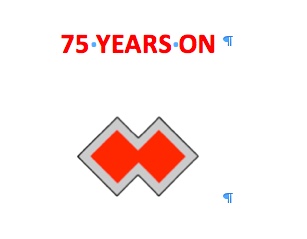
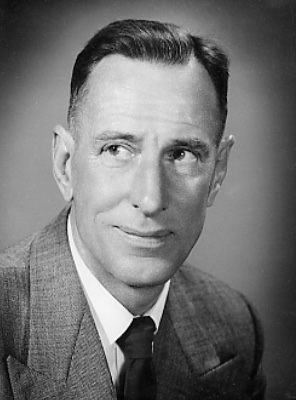

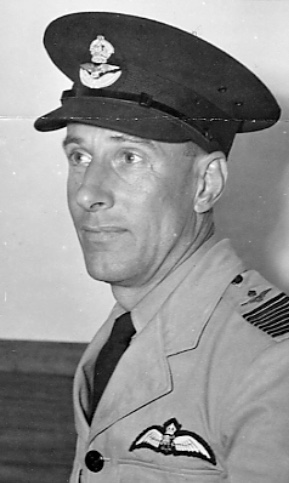











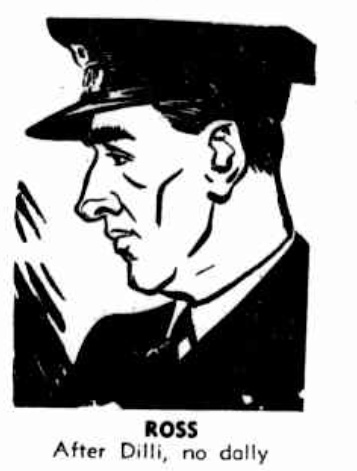



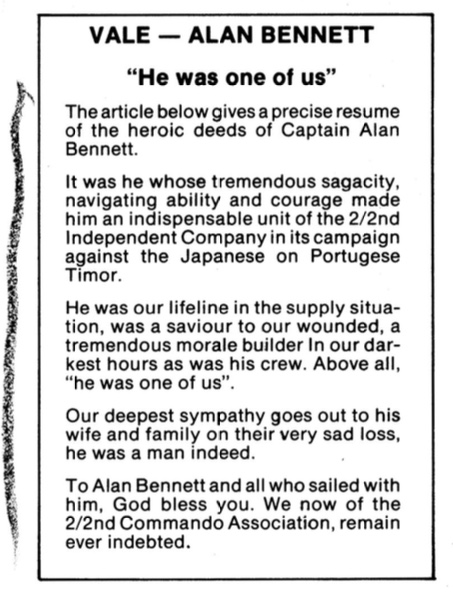

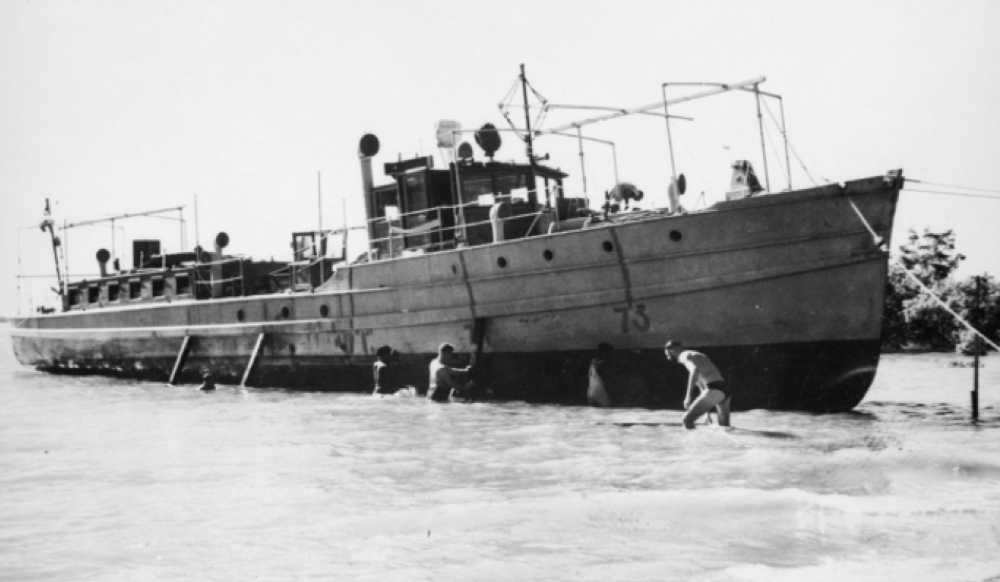



.thumb.jpg.1ad01b61be10a90f4d75471c271fb616.jpg)

.thumb.jpg.676180cf45a8a57ff261ade8a68a75b8.jpg)








.jpg.5c7434bf3d86811ba739224cbb8cef6e.jpg)
MilsomMilitaryHistorySectionFieldTeamtalkingtoManuberiwhowashiscreado.jpg.0b23d5a3bb67b8c5f41efbbdb9b3ce13.jpg)

officialphotographersittingonthedeckofHMASParkes.thumb.png.8a01f729fd107901ada799b6d622ce36.png)








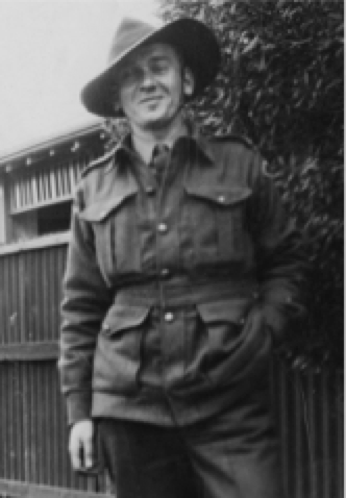


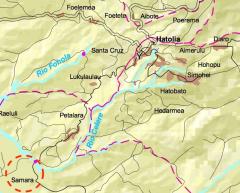
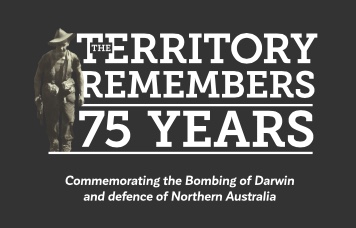





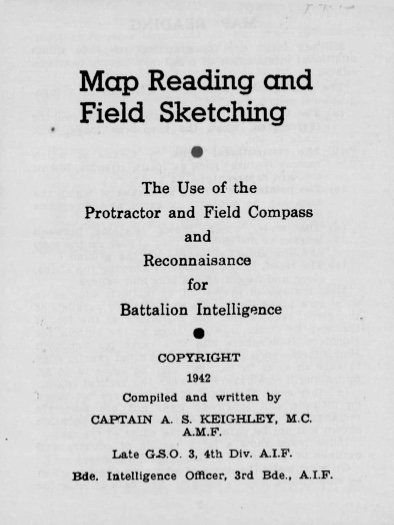











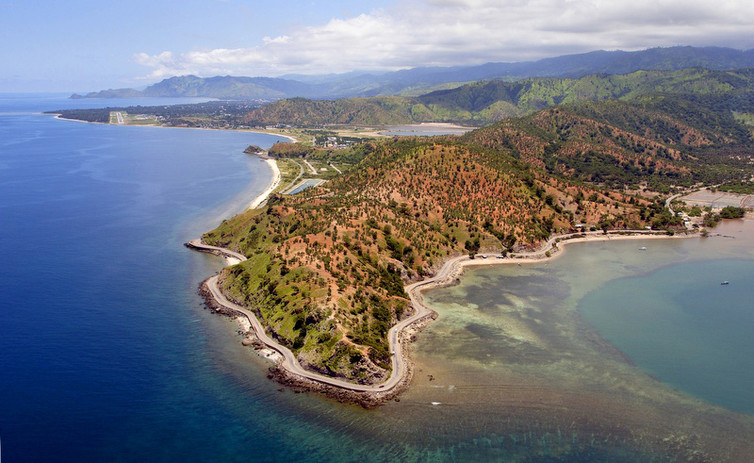




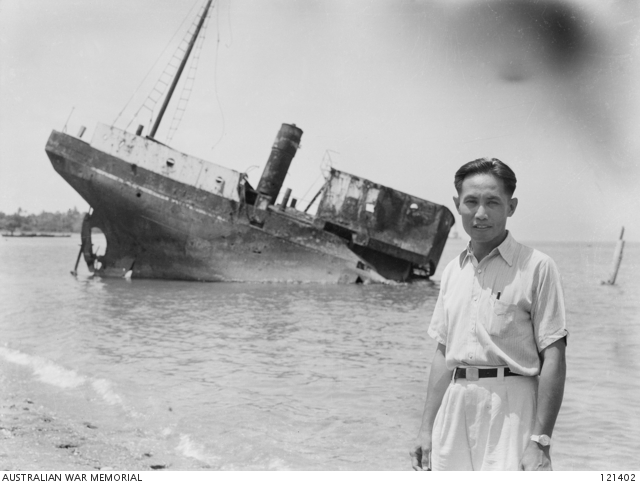
copy.thumb.jpg.6fc7fb555fdc4e8f006d02738e2304b0.jpg)
onaregularservice.._copy.thumb.jpeg.a72e5bbb8ec3d03c272ea4f2e5e1489b.jpeg)
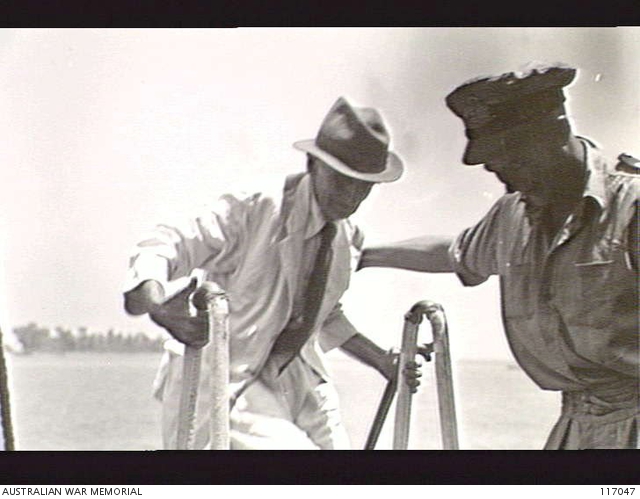

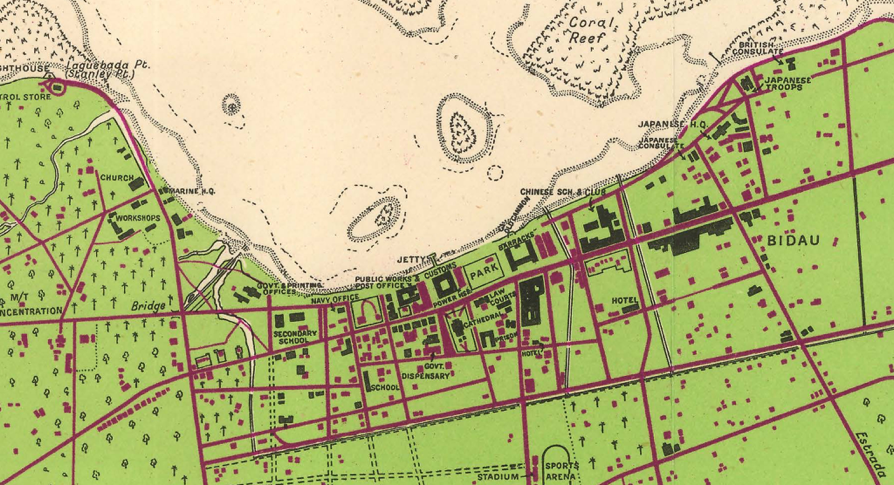


onaregularservice.._copy.jpeg.0056b165ac9c6bb45f4776cd0aed12c6.jpeg)
